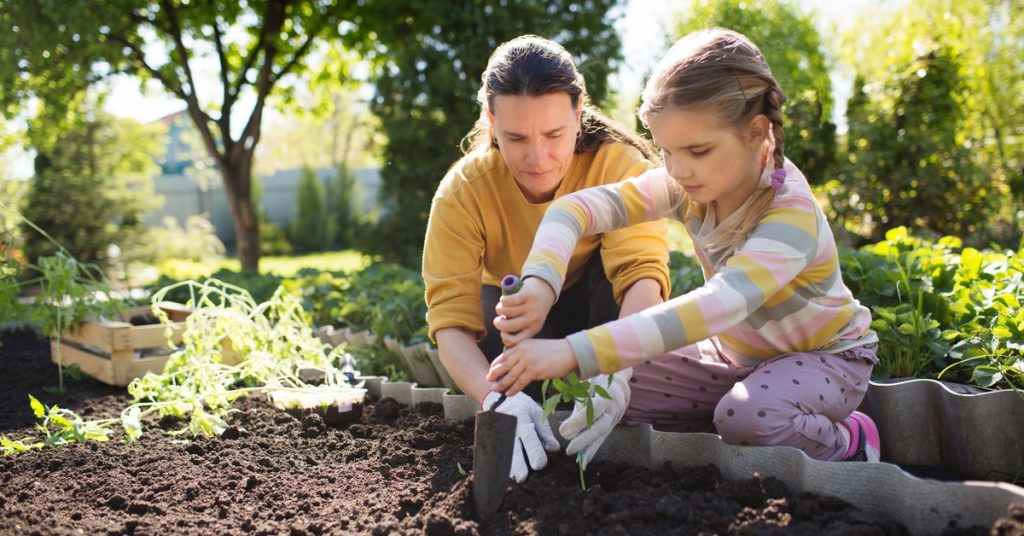It can be healthy to bring your children into the kitchen to “help you cook” from time to time, even if that means in a limited role. Of course, that approach means taking a careful observational eye towards everything they do and are permitted to take part in. We must make certain that they cannot reach knives, tools with sharp edges, hot surfaces or electrical devices that we utilize in the kitchen for obvious reasons.
However, we can allow them to prepare certain ingredients for us under direct supervision, and we can allow them to decorate. Bringing children into the kitchen is a great way to bond, while also teaching them useful life skills they can begin to chip away at even in their formative years.
In this post, then, we’ll discuss a few ays to naturally ingratiate them into the space while also leaving you room to actually cook dinner or the treats you were hoping to eat later. WIthout further ado, let’s consider.
Creating Simple Dishes
Of course, allowing children to help create simple dishes, especially those that require fun customizing and the application of necessary ingredients, can be a great idea. Showing them the basics of adding toppings to an artichoke pizza for your evening meal, for instance, can help them see the color, creativity, and beauty in organizing food to our standards.
This way, we show that cooking is an active and purposeful activity; and there’s room to adjust outside of the strict necessity of a recipe. That said, following the recipe to begin with can show them how to follow instructions, and familiarize them with the imperative language used by recipes in order to make the process work. Here they can also see how ingredient lists are laid out, and how to understand the instructions presented to them. As such, this can also be a great method of encouraging their reading and ability to parse information.
Baking Is Key
Parents often find that baking is a brilliant means of introducing children to the kitchen, not only because of how enjoyable it is, but because of how fun it can be. Mixing flour and pastries, rolling them out, flouring the board or table, and dividing it carefully, adding chocolate chips, all of this can showcase the fun involved in creating light snacks and delectable treats ourselves.
Moreover, baking can allow for more creativity with less in the way of ‘messing a dish up’ if you don’t follow the exact rules. For instance, how a child decides to ice their cookies can help them add their own unique stamp to the affair, and have fun with lovely additions and colors as a result. Sure, there’s more mess to deal with, but it’s also a cheap and harmless experience for all involved.
Measuring & Containing
A good means of allowing children to help out in this context is to provide them the tools of measuring and containing as they deserve to enjoy them. From weighing flour appropriately using your scales to ensuring all of the excess ingredients are placed in jars, this will help your child perform a relatively simple task without having access to the sharper or more dangerous utilities as part of that.
In other words, this allows them to feel as though they’re helping every moment without complaining about “not really” being involved, especially at an age where it’s simply bad parenting to grant them access.
Fun Tools & Accessories
There are many fun tools and accessories to appreciate when cooking. Simple things, like dinosaur cut-outs for cookies, rolling pins and chopping boards, scales and bowls, mixing bowls as appropriate, whisks, and more, can help a child get used to the vocabulary and generalized tools of a kitchen.
Here, we can also teach a child to wash up after using those implements, or rinsing them off and placing them neatly in your dishwasher. That might not sound like the most enthrallnig activity to adults, but you can bet that children are happy to have some sense of adult control over how the kitchen operates, and it’s best to teach them now when their enthusiasm is high than in their teenage years when this can feel like rolling a stone uphill. Teach them young, as they say.
With this advice, your child is sure to become more familiar with the kitchen in the best possible light. Who knows what wonders you could both create, and how proud they’ll feel when presenting your work to the family at large?



